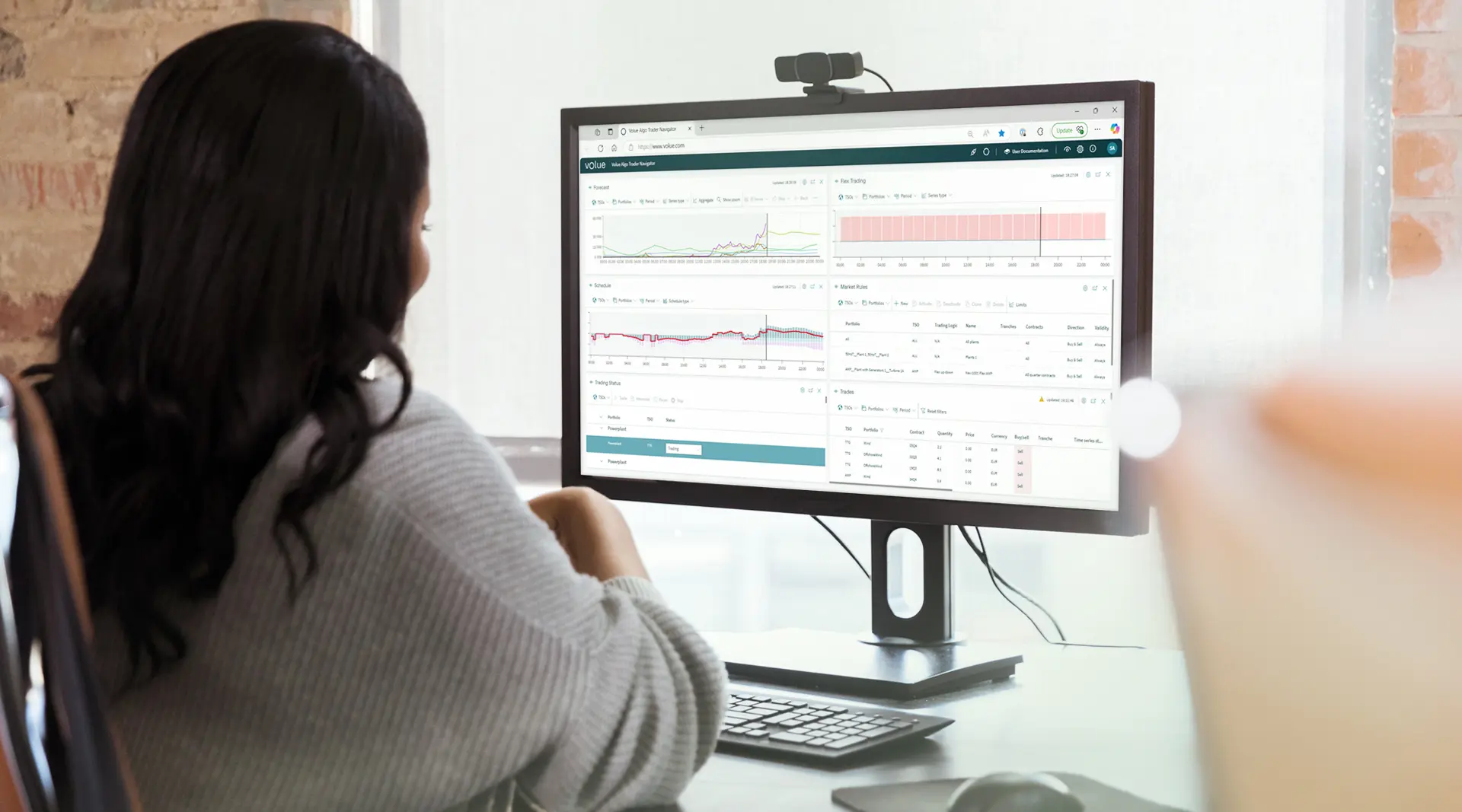20+ Best Day Trading Strategies That Work Well
Discover the best day trading strategies that work to boost your profits. Learn proven techniques to enhance your trading success today!

Day trading can feel like riding a roller coaster. One minute you're soaring, and the next, you're plummeting. It’s exciting, but it’s also risky, especially if you’re not equipped with the right strategies. Consider logging into a funded trading account and making informed decisions that maximize profits, rather than making mistakes.
This is where knowing the best day trading strategies comes in handy. With a solid game plan—and the best brokers for day trading—you can turn chaos into opportunity.
AquaFunded offers a funded trading program designed to help you reach your goals. Their support and resources can help keep you on track and avoid common pitfalls.
Pros and Cons of Day Trading

The Upside of Day Trading: High Returns and Personal Freedom
1. Potential for High Returns
Day trading, when executed well, can deliver substantial profits. With leverage, even small price movements can translate into significant gains. Skilled traders who can predict market shifts and act decisively can enjoy substantial financial rewards.
2. Independence and Flexibility in Trading
One of the most enticing aspects of day trading is the independence it offers. Traders can work from anywhere with an internet connection and set their own hours and strategies. This autonomy is appealing to those looking to break free from the traditional 9-to-5 workday.
3. Rapid Decision-Making Ability
Day trading hones your decision-making skills as you must quickly analyze market conditions and execute trades. This fast-paced environment can be intellectually stimulating and rewarding for those who thrive in high-pressure situations.
4. Limited Drawdowns in Day Trading
Since trades are closed by the end of the trading day, there's no risk of overnight market changes affecting your positions. This can limit potential losses, providing a sense of control over your investments.
5. Liquidity and Accessibility
Day trading in highly liquid markets means you can easily enter and exit trades. Plus, technological advancements and online trading platforms have made day trading more accessible than ever.
6. Immediate Feedback on Trading Performance
Day trading provides immediate feedback on your strategies and decisions. This real-time evaluation allows you to quickly learn from mistakes and refine your approach, potentially accelerating your development as a trader.
The Downside of Day Trading: Risks, Stress, and Costs
1. High Risk and Possibility of Significant Losses
The flip side of high returns is high risk. Day trading is notoriously risky, with the potential for significant financial losses. Even experienced traders can suffer substantial losses if market conditions are unfavorable or if they make poor decisions.
2. Time and Commitment Required for Success
Day trading is a full-time job that requires immense dedication and commitment. Successful traders spend countless hours analyzing markets, developing effective strategies, and closely monitoring their trades. It demands a significant amount of your time and effort to be invested.
3. Emotional and Psychological Strain
The emotional and psychological strain of day trading can be overwhelming. The constant pressure to make quick decisions, the fear of losses, and the elation of gains can create a rollercoaster of emotions. Managing stress and maintaining emotional balance is crucial for long-term success.
4. Transaction Costs and Associated Fees
Frequent trading incurs significant transaction costs and fees. This cost can eventually add up and eat into your profits. It's essential to factor in these costs when planning your trading strategy to ensure they don't outweigh your gains.
5. Potential for Addiction to Trading
The thrill of day trading can be addictive, leading some individuals to develop unhealthy trading habits. This addiction can result in reckless decision-making and significant financial losses. It's crucial to maintain a balanced approach and recognize when trading is becoming detrimental to both your financial well-being and mental health.
6. Necessity for Thorough Research and Analysis
Successful day trading requires thorough research and analysis. Traders must stay informed about all the market trends, news, and economic indicators. This level of commitment to staying updated can be time-consuming and demanding.
Related Reading
- Is Day Trading Illegal
- How Risky Is Day Trading
- Can You Make Money Day Trading
- Is Day Trading A Good Side Hustle
- How To Find Stocks For Day Trading
- What Type Of Trading Is Most Profitable
- How To Trade And Make Money
- Do You Pay Taxes On Day Trading
- How Long Does It Take To Become A Profitable Day Trader
- Can Day Trading Be A Career
20+ Best Day Trading Strategies That Work Well

1. Pure Day Trading (Intraday)
This is the classic approach to day trading. You open and close trades within the same day, minimizing overnight exposure. Traders use short-term technical tools to spot intraday opportunities.
Pros
- No overnight risk from news
- Plenty of opportunities during active sessions
- Utilizes intraday volatility
Cons
- Requires complete focus and quick decisions
- High transaction costs
- Risk of overtrading
2. Momentum / Trend Momentum (Intraday)
This strategy involves riding strong intraday moves. You enter in the direction of the momentum and exit when it begins to wane.
Pros
- Potential for quick, significant gains
- Clear directional bias
- Effective in trending periods
Cons
- Vulnerable to sudden reversals
- False signals in choppy markets
- Requires precise timing
3. Scalping
Scalping involves making numerous small trades to capitalize on small price movements. Trades last from seconds to a few minutes.
Pros
- Minimal market exposure per trade
- Many chances to profit in high-volume markets
- Compound small wins
Cons
- High demands on speed and execution
- Transaction costs can erode profits
- Risk of overtrading and fatigue
4. Breakout Trading
Traders enter trades when price breaks past key support or resistance zones, expecting a strong move. Volume or candlestick patterns often confirm the breakout.
Pros
- Captures the early phase of strong moves
- Clear entry triggers
- Effective when volatility increases
Cons
- Many false breakouts
- Stop placement can be tricky
- Risk of whipsaws
5. Mean Reversion (Intraday)
This strategy bets on price returning to a mean or average within a short period after a substantial deviation.
Pros
- Effective in stable or rangebound intraday environments
- Potential for a high win rate
- Clear rules using indicators like Bollinger Bands
Cons
- Fails in trending markets
- Reversion may take time, tying up capital
- Requires tight stops
6. Range / Channel Trading
Identify price ranges during the day and trade within the bounds. Buy near support and sell near resistance.
Pros
- Predictable entry and exit zones
- Less risky if the range is respected
- Effective in non-trending periods
Cons
- Breakouts can disrupt the pattern
- Limited profit unless the range is wide
- Ranges can shift
7. Gap / Opening Range Strategies
Trade significant gaps at market open, either riding the gap’s momentum or trading a gap fill.
Pros
- Strong intraday volatility
- Clear reference levels at open
- Many traders watch gaps
Cons
- Risk of violent reversals
- Gaps can extend rather than revert
- Needs careful stop management
8. Moving Average Crossover
Use moving averages on intraday charts to signal entry when a shorter MA crosses above a longer one.
Pros
- Simple rules, easy to automate
- Filters some noise
- Momentum confirmation
Cons
- Lagging signals
- Many false signals in choppy markets
- Whipsaws when the price is ranging
9. MACD / Momentum Indicator Strategy
Use indicators like MACD to gauge trend strength and entry/exit signals.
Pros
- Identifies trend shifts and momentum
- Can filter weak signals
- Useful in trending environments
Cons
- Lagging nature means late entries
- Many false signals in low-volatility periods
- Overreliance can ignore the price structure
10. Reversal / Pullback Strategy
Look for signs of exhaustion and reversal after a sharp price move or wait for pullbacks to join a trend.
Pros
- High reward potential if reversal is strong
- Prefers value entries
- Useful in volatile markets
Cons
- Risk of catching trend continuation
- Needs good confirmation
- May get chopped in consolidation
11. Price Action / Candlestick Pattern Trading
Focus on raw price behavior and patterns, such as candlestick formations and support/resistance levels.
Pros
- Cleaner charts, less reliance on indicators
- More adaptable to conditions
- Encourages understanding of market psychology
Cons
- Requires skill and pattern recognition
- Subjective interpretation
- Patterns sometimes fail
12. Fibonacci Retracement / Extension Strategy
Use Fibonacci levels to find areas where price might reverse or stall during a move.
Pros
- Defined zones for entries and stops
- Widely monitored by traders
- Useful in pullbacks and trending moments
Cons
- Fibonacci levels can be drawn incorrectly
- Multiple levels may confuse
- Doesn’t guarantee a reversal
13. Algorithmic / Automated Trading
Define algorithmic rules and let a computer execute trades.
Pros
- Emotion-free execution
- Operates faster than humans
- Can run multiple strategies
Cons
- Requires programming and monitoring
- Risk of technical failures
- Overfitting can lead to poor performance
14. News / Event Driven Trading
Trade around news or economic events to capture abrupt price moves.
Pros
- High volatility produces significant moves
- Many predictable events
- Opportunity for fast gains
Cons
- Very high risk
- Hard to interpret reactions
- Spread widening around the news
15. Pair / Relative Value / Statistical Arbitrage
Trade two correlated assets, expecting their spread to revert.
Pros
- Less exposure to market direction
- Can profit in rising and falling markets
- Statistical nature allows systematic application
Cons
- Spread divergence may persist
- Requires good correlation analysis
- Execution costs can erode the edge
16. Market Making / Liquidity Provision
Quote buy and sell orders to capture the spread, acting as a liquidity provider.
Pros
- Frequent, small profits
- Profits from providing liquidity
- Steady flow of opportunities
Cons
- Inventory risk
- Requires sophisticated infrastructure
- Vulnerable to sudden price jumps
17. High-Frequency Trading (HFT)
Rapid algorithmic trading, which exploits micro-price inefficiencies, is typically done by institutions.
Pros
- Extremely high turnover
- Exploits micro-inefficiencies
- Very low holding time
Cons
- Requires advanced tech
- Regulatory risk and costs
- Not feasible for most individuals
18. End-of-Day / Close-Based Intraday Strategy
Trade based on patterns at or near market close, entering positions in the last minutes.
Pros
- Taps into end-of-session flows
- Clear time boundaries
- Less stress
Cons
- Limited opportunities
- Risk of sudden reversals
- Potential for slippage
19. Flip / Support-Resistance Flip Strategy
Trade the retest of a level after it flips from resistance to support or vice versa.
Pros
- Good risk/reward
- Many traders look for flips
- Can combine with breakout strategy
Cons
- Retest may not occur
- The level may fail
- Needs confirmation
20. Volatility / ATR Channel Strategy
Use volatility indicators to set dynamic bands around price and trade on moves to the outer bands.
Pros
- Adapts to changing volatility
- Helps avoid fixed ranges
- Balances breakout and mean reversion
Cons
- Bands widen when volatility spikes
- Frequent whipsaws in choppy markets
- Requires parameter tuning
21. Hybrid / Strategy Switching / Adaptive Approach
Switch among strategies based on market conditions, utilizing breakout methods in trends, mean reversion, or range in sideways periods.
Pros
- More flexibility
- Avoids being stuck in a losing strategy
- Better chance to stay effective
Cons
- More complex
- Potential for confusion
- Needs robust rules for switching
How to Choose a Day Trading Strategy

Pick the Right Timeframe
Choosing your trading timeframe is like setting the pace for your daily routine. Short intervals, such as 1- or 5-minute charts, offer more opportunities but can be stressful. If you can only trade during certain hours, opt for longer timeframes, such as 15-minute or 30-minute intervals.
- Interest in shorter timeframes? They provide more opportunities but bring more stress.
- Prefer longer timeframes? They offer cleaner signals but fewer trades.
- Ensure your chosen timeframe aligns with market liquidity and volatility to facilitate smooth trades.
Choose Your Market Wisely
Your choice of asset class should match your expertise and availability. Consider stocks, forex, indices, or commodities. Look for markets with good liquidity, tight spreads, and enough intraday volatility to create tradable opportunities.
- Volatile assets can yield larger profits but carry higher risk.
- Thinly traded assets often exhibit large spreads and suboptimal order execution.
- Specializing in one or two instruments often helps refine accuracy and consistency.
Check the Market's Mood
Understanding the current state of the market—whether it's trending, ranging, or volatile—is key. Utilize technical tools such as moving averages, trendlines, or swing highs and lows to gauge the direction. Your strategy should be adaptable; for example, you might use breakout methods in trends and mean reversion in ranges.
- A trend-following strategy can lose in sideways markets.
- Range-based systems fail when volatility expands or a breakout occurs.
- Market regime filters can prevent the use of a system in a bad condition.
Set Your Risk Boundaries
Manage your risk by defining how much capital you're willing to risk per trade and where you will place your stop losses. Use position sizing to ensure that one loss doesn't significantly damage your account, and use leverage cautiously.
- Tight stops can protect capital, but may get hit too often.
- Wider stops can absorb volatility but increase the loss size.
- Always maintain a consistent risk-to-reward ratio (for example, risking 1 to make 2 or more).
Nail Down Your Entry Rules
Your strategy must clearly define when to enter a trade. Look for breakouts, indicator signals, price patterns, or volume changes. Utilize multiple confirmations to enhance trade quality, such as combining momentum indicators with chart patterns or volume surges.
- Too many filters can cause missed opportunities.
- Too few filters can lead to false entries.
- Focus on setups that repeat consistently and are easy to identify.
Plan Your Exits
Decide how and when you'll close your trades. Options include setting fixed targets, using trailing stops, or scaling out of positions as profits grow. It's equally important to have a predefined stop loss for every position to prevent large drawdowns.
- Fixed profit targets bring discipline but can cut winners short.
- Trailing stops can help capture bigger moves but are more sensitive to volatility.
- Partial exits balance safety and flexibility but complicate trade management.
Document and Test Everything
Write down every rule of your strategy—timeframe, market, indicators, entry/exit criteria, and risk limits. Backtest your approach using historical data to assess its performance under various conditions. Then, run it in a demo account or paper trade to confirm its practicality before going live. Maintain a detailed trade journal, recording entries, exits, reasons, and results. Review patterns to find what consistently works and what needs improvement.
- Avoid overfitting your strategy to past data—it should be effective across various environments.
- Continuous review helps identify weaknesses and adapt to market changes.
- Real discipline in following your plan is more valuable than a perfect system.
AquaFunded offers a funded trading program that lets you turn your trading skills into substantial profits without risking your own capital. Access accounts up to $400K with flexible trading conditions, join over 42,000 traders worldwide, and start trading today with instant funding options.
Related Reading
- Can Day Trading Make You Rich
- Best Moving Average For Day Trading
- How Much Can You Make Day Trading With $1,000
- Day Trading Technical Analysis
- Day Trading Momentum Strategy
- Day Trading With AI
- Day Trading Futures For A Living
- Day Trading Setup
- Day Trading Goals
- Automated Day Trading
- Day Trading Success Rate
11 Tips for Day Trading like a Pro

1. Turbocharge Your Trading with AquaFunded
Boost your day trading game with AquaFunded, where you can leverage your skills without the risk of losing your own money. Gain access to accounts up to $400,000, with lenient trading conditions—no time constraints, achievable profit goals, and up to 100% profit sharing. Over 42,000 traders globally have earned more than $2.9 million in rewards, all backed by a 48-hour payment guarantee. Dive right in with instant funding, or showcase your prowess through tailored challenge paths and keep every penny you earn.
2. Knowledge is Your Secret Weapon
Stay sharp by keeping up with the latest financial news. This includes interest rate decisions by the Federal Reserve, key economic indicators, and other financial updates that significantly impact market movements. Map out a list of stocks you're interested in, and get to know these companies inside out. Bookmark credible news sources, and stay informed.
3. Allocate Funds Wisely
Decide upfront how much capital you’re willing to risk on each trade. Many seasoned day traders risk between 1% and 2% of their accounts per trade. If you have $40,000 to trade, and you’re comfortable with a 0.5% risk per trade, your potential loss is capped at $200. Only trade with reputable brokers and platforms. Set funds aside that you’re prepared to lose.
4. Dedicate Ample Time
Day trading demands your full attention and time. It’s not for those with a tight schedule. You need to be on your toes, ready to pounce on opportunities as they arise throughout the trading day. Be prepared to react swiftly.
5. Start Small for Big Gains
If you’re new to day trading, stick with one or two stocks per session. It’s easier to track and find opportunities with fewer stocks. You can also trade fractional shares, allowing you to invest in small amounts. For example, if Amazon shares cost $170, many brokers let you buy a piece of it for as little as $5.
6. Steer Clear of Penny Stocks
Penny stocks might seem like a deal, but they’re often illiquid, and the odds of striking it rich are slim. Stocks trading under $5 usually get delisted from major exchanges. Unless you’ve done thorough research, avoid these. Finding undervalued stocks takes effort.
7. Master the Art of Timing
The market is most volatile when it opens as traders rush to execute orders. Experienced traders can spot and capitalize on these patterns. If you’re a beginner, it’s better to observe without acting for the first 15 to 20 minutes. The action slows down mid-day and picks up again before the market closes. Timing matters, but as a newcomer, steer clear of the rush hours initially.
8. Use Limit Orders to Manage Risk
Decide in advance how you’ll enter and exit trades. Will you use market orders or limit orders? Market orders get you in or out fast, but don’t guarantee a price. Limit orders, on the other hand, secure a price but not always the execution. They enable precise trading and can minimize losses during market reversals. If the market doesn’t hit your price, though, you may not get filled.
9. Keep Profit Expectations Realistic
Your strategy doesn’t have to win all the time to be successful. Traders can succeed by profiting on just 50% to 60% of their trades if their wins outweigh their losses. Keep the risk on each trade limited to a specific percentage of your account, with clear entry and exit strategies.
10. Reflect and Learn from Your Trades
Frequent reflection on your trading actions is crucial. It helps you spot patterns, learn from mistakes, and tweak your strategies. This encourages continuous learning and adaptation to changing market conditions. It also fosters discipline and emotional control, both of which are key to trading success.
11. Stick to Your Trading Plan
Successful traders don’t need to think fast—they’ve already developed a strategy and have the discipline to stick to it. The key is to follow your method closely, rather than chasing profits. Keep your emotions in check and stay on track with your plan. Remember the mantra: plan your trade and trade your plan.
Join Our Funded Trading Program Today - Trade with our Capital and Keep up to 100% of the Profit.

AquaFunded: Fuel Your Day Trading with Instant Access
If you’re looking to skyrocket your day trading game without risking your own capital, AquaFunded has your back. They provide access to accounts up to $400K with some of the most flexible trading conditions in the industry. Say goodbye to stressful time limits and hello to easy-to-achieve profit targets. You can even enjoy up to a 100% profit split. AquaFunded is a game-changer for traders who want to retain their earnings. Consider honing your skills and reaping the rewards without risking your own money. Now that's trading freedom.
Join a Massive Global Community of Successful Traders
AquaFunded isn't just a platform; it's a community. Over 42,000 traders worldwide have already collected more than $2.9 million in rewards. This thriving network provides a sense of camaraderie and support. When you join AquaFunded, you’re not just getting access to capital; you’re joining a movement. And with their 48-hour payment guarantee, you can rest easy knowing your hard-earned profits are just a click away.
Multiple Paths to Success: Choose Your Adventure
Whether you’re a seasoned professional or just starting, AquaFunded offers multiple paths to success. You can start trading today with instant funding options or prove your skills through their customizable challenge paths. These challenges are designed to test your skills and help you grow as a trader. And with AquaFunded, you keep up to 100% of your earnings. That means more money in your pocket and more opportunities to build your trading empire.
Flexible Trading Conditions: Trade Your Way
AquaFunded offers some of the most flexible trading conditions in the industry. That means you can trade your way, without the constraints that other platforms impose. You can choose from a variety of trading strategies and techniques, and you’ll have access to the tools and resources you need to succeed. Whether you prefer scalping, swing trading, or something in between, AquaFunded has you covered.
Your Profits, Your Way: Enjoy a 100% Profit Split
One of the most significant advantages of trading with AquaFunded is its generous profit split. You can enjoy up to a 100% profit split, which means you keep more of what you earn. And with their 48-hour payment guarantee, you’ll never have to wait long to access your profits. This flexible profit-sharing model is just one of the many ways AquaFunded prioritizes your success as a trader.
Related Reading
- Day Trading Checklist
- Day Trading Statistics
- Best Markets For Day Trading
- Day Trading vs Dropshipping
- Day Trading vs Long-Term Investing
- Best Day Trading Indicators
- Best Software For Day Trading


